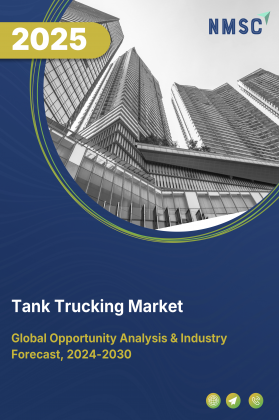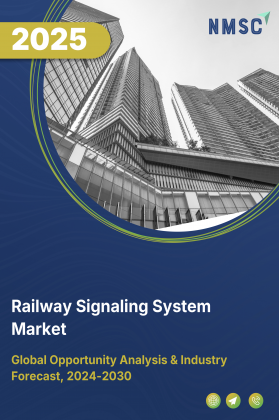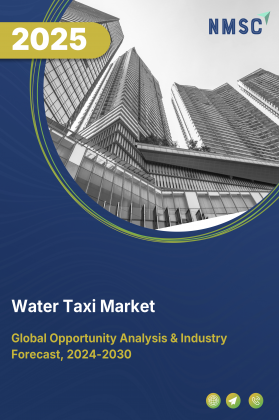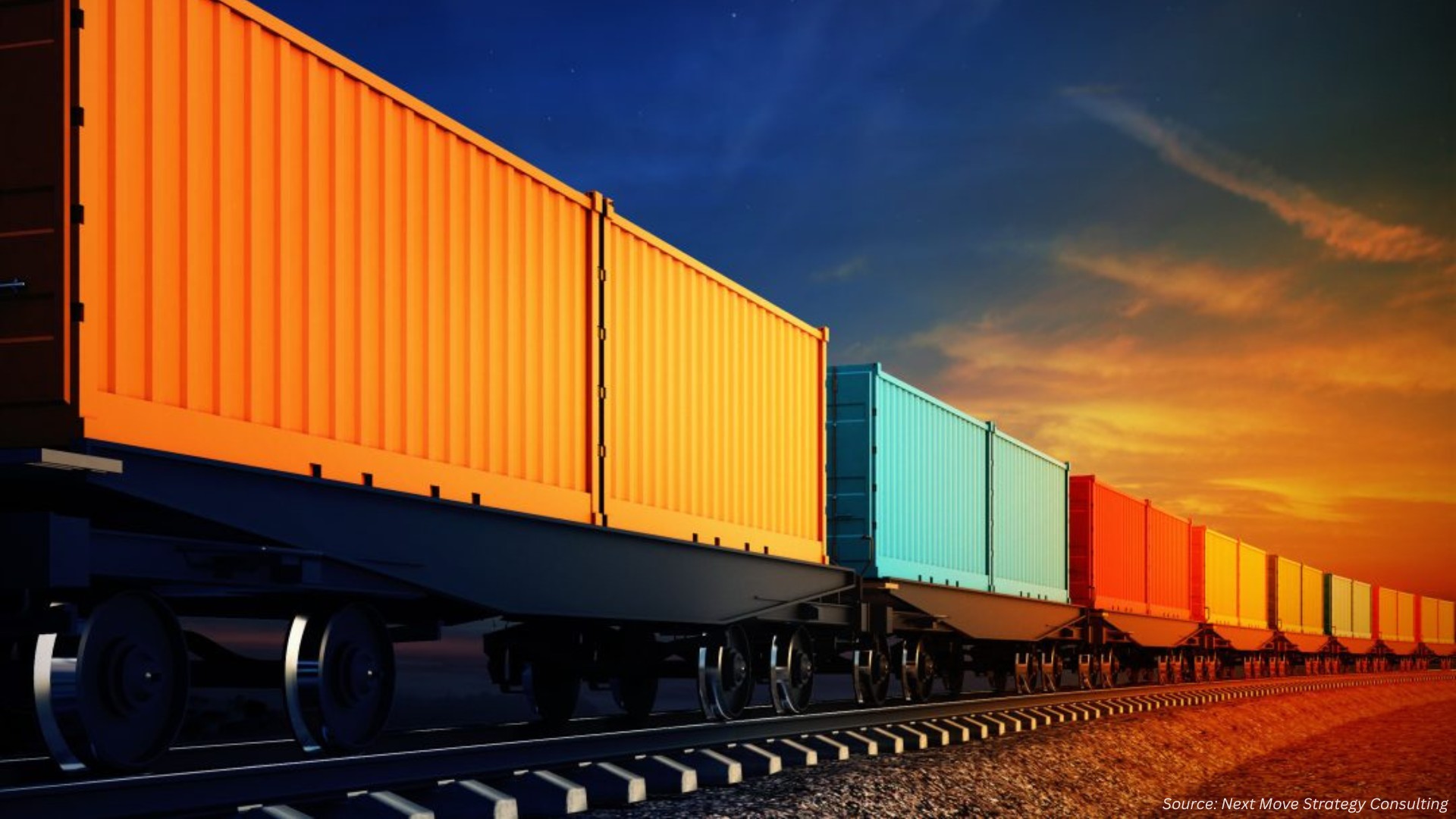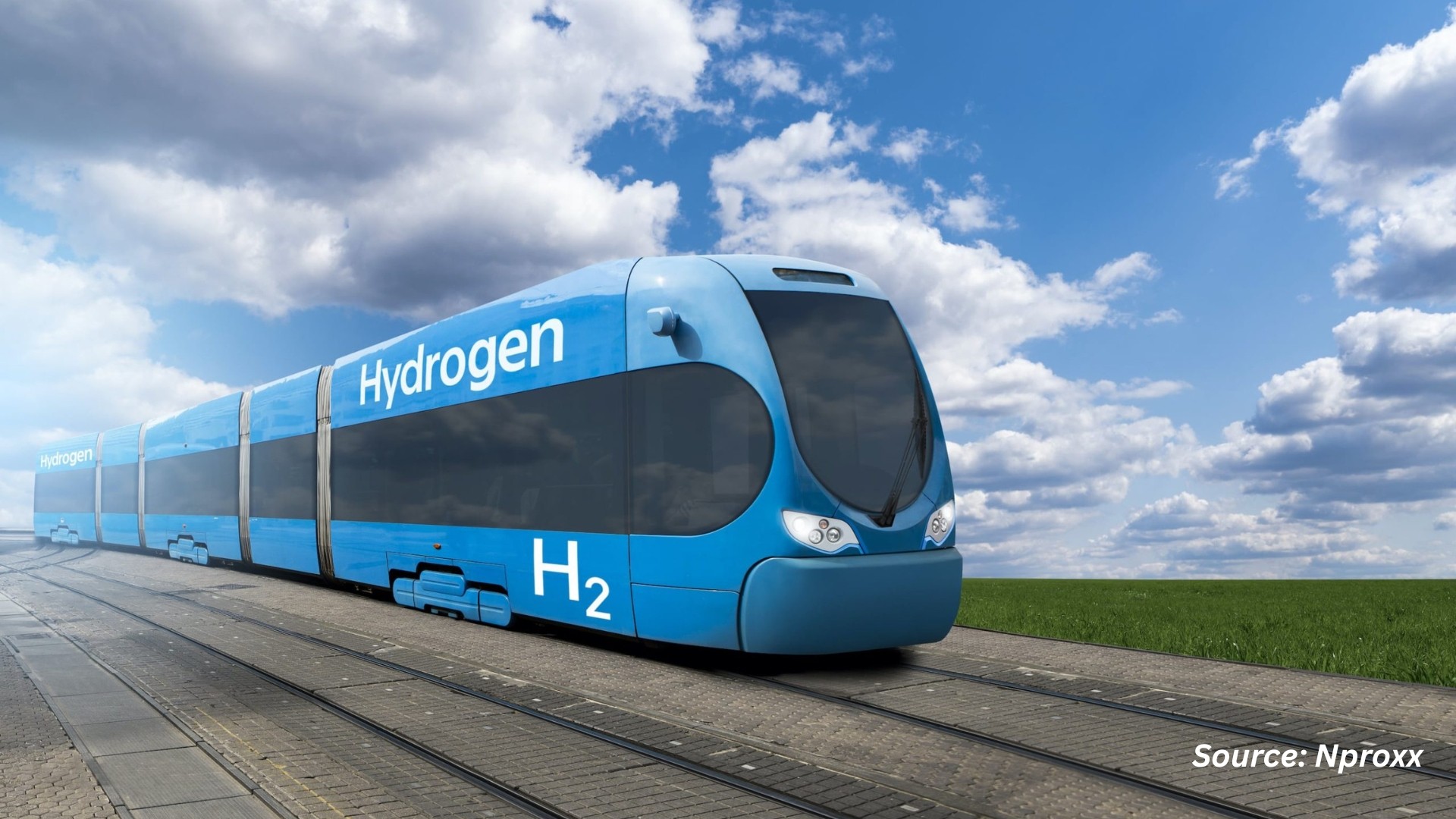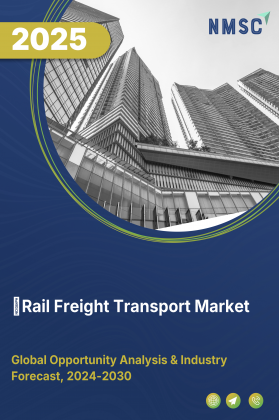
Rail Freight Transport Market by Cargo Type (Bulk Cargo, Containerized Cargo, Specialized Cargo), by Traction Technology (Electric Locomotives, Diesel Locomotives), by Operational Scope (Domestic National Networks, Cross-Border International Routes), by Transport Distance (Short-Haul, Medium-Haul, Long-Haul), by Industrial Application (Primary Sector, Secondary Sector, Tertiary Sector), and by End User (Rail Service Operators) – Global Opportunity Analysis and Industry Forecast 2025–2030
Industry Overview
The global Rail Freight Transport Market size was valued at USD 574.19 billion in 2024 and is predicted to reach USD 613.24 billion by the end of 2025. The industry is predicted to reach USD 852.09 billion by 2030 with a CAGR of 6.8% from 2025-2030. The sector is experiencing strong growth, driven by supportive government policies, sustainability initiatives, and expanding global trade.
Large-scale infrastructure developments, regulatory reforms, and investments in dedicated freight corridors are enhancing capacity, reducing transit times, and lowering costs. Sustainability goals are pushing a shift from road to rail, supported by electrification, energy-efficient locomotives, and renewable energy adoption.
Rising international trade volumes are increasing demand for efficient, long-distance, high-volume transport, with rail offering cost and connectivity advantages. However, high infrastructure and technology costs remain a challenge, particularly for smaller operators.
At the same time, the integration of smart telematics and IoT for real-time monitoring presents significant opportunities, enabling predictive maintenance, improved efficiency, and greater transparency, further positioning rail freight as a competitive logistics solution.
Supportive Government Policies Fuel the Market Expansion
Supportive government policies are significantly driving the rail freight transport market growth, as reflected in large-scale infrastructure projects initiated by the Ministry of Railways. According to the Press Information Bureau (PIB) in 2025, the government is constructing two Dedicated Freight Corridors (DFCs), the Eastern DFC from Ludhiana to Sonnagar (1,337 km) and the Western DFC from Jawaharlal Nehru Port Terminal to Dadri (1,506 km).
Of the total 2,843 km network, 96.4% (2,741 km) is already commissioned and operational, with the remaining sections under development. Such projects, backed by regulatory reforms, financial incentives, and sustainability goals, are enhancing freight capacity, reducing transit times, lowering costs, and making rail an increasingly attractive and competitive mode of transport, thereby accelerating market expansion.
Sustainability Initiatives Propel the Rail Freight Transport Growth
Sustainability initiatives are a major driver of the rail freight transport market demand, as the growing global focus on reducing greenhouse gas emissions and adopting eco-friendly logistics solutions is pushing shippers and governments to favour rail over more carbon-intensive modes like road or air.
Rail freight produces significantly lower CO₂ emissions per tonne-kilometre, consumes less energy, and reduces highway congestion, aligning with national and international climate commitments. Governments and industry players are investing in electrification of rail lines, energy-efficient locomotives, and adoption of renewable energy sources, while promoting modal shifts from road to rail through green logistics policies. These efforts not only help meet sustainability targets but also enhance operational efficiency, brand reputation, and long-term cost savings, thereby fuelling growth in the market.
Expanding Global Trade Boosts the Market Growth
Expanding global trade is a key driver of the rail freight transport market expansion, as the increasing movement of goods across borders creates higher demand for efficient, reliable, and cost-effective transportation solutions. Growth in international trade volumes, driven by globalization, industrialization, and diversified supply chains, requires robust logistics networks to move bulk commodities, raw materials, and finished goods between ports, production hubs, and inland markets.
Rail freight offers a competitive advantage for long-distance, high-volume shipments due to its lower costs per tonne-kilometre, faster transit compared to maritime for certain inland routes, and ability to connect seamlessly with ports through dedicated freight corridors. As cross-border trade agreements expand and multimodal logistics integration improves, rail freight is becoming an increasingly critical link in global supply chains, thereby accelerating industry growth.
High Infrastructure and Technology Costs Restrain the Market
The substantial capital investment required for developing rail freight infrastructure and adopting advanced technologies presents a significant challenge to the market growth. Constructing new rail lines or implementing systems such as the European Rail Traffic Management System (ERTMS) involves high upfront costs that deter widespread adoption. This is particularly burdensome for small-to-medium businesses, which lack the financial resources to access the long-term cost advantages of rail freight.
As a result, these high costs act as a barrier to entry and limit the market's ability to scale efficiently, especially in regions facing fiscal constraints. The slower pace of innovation adoption also restricts improvements in operational efficiency and reduces the overall competitiveness of the market.
Integration of Smart Telematics and IoT for Real-Time Freight Monitoring Creates Growth Opportunities for the Market
Integration of smart telematics and IoT for real-time freight monitoring presents a significant opportunity for the market, as it enhances operational efficiency, safety, and customer satisfaction. By equipping locomotives and freight wagons with IoT sensors, GPS tracking, and telematics systems, operators monitor location, speed, cargo condition, and equipment health in real time. This enables predictive maintenance, reduces downtime, improves route optimization, and ensures timely deliveries.
Additionally, real-time visibility allows shippers to track shipments, manage inventory more effectively, and respond quickly to delays or disruptions. As global supply chains become more complex, the demand for such digital solutions is rising, creating new revenue streams for technology providers and positioning rail freight as a more competitive and transparent mode of transport.
Market Segmentation and Scope of the Study
The rail freight transport market report is segmented by cargo type, traction technology, operational scope, transport distance, industrial application, end user and regions. By cargo type, it covers bulk cargo such as unprocessed solids and liquid bulk, containerized cargo including dry standard containers and temperature-controlled containers, and specialized cargo. Traction technology includes electric locomotives, diesel locomotives, and alternative fuel systems such as hydrogen-powered and battery-electric hybrids. Operational scope is divided into domestic national networks and cross-border international routes, while transport distance spans short-haul, medium-haul, and long-haul services. Industrial applications serve the primary sector including mining outputs and energy resources like thermal coal and petroleum products, the secondary sector including construction materials and manufacturing components, and the tertiary sector including consumer goods and agricultural products. End users include rail service operators, infrastructure owners, and regulatory entities, with regional analysis across North America, Europe, Asia-Pacific, and the Rest of the World.
Geographical Analysis
One key driver of the rail freight transport market share in North America is the strong demand for bulk commodity transportation, particularly for goods such as coal, agricultural products, petroleum, chemicals, and industrial raw materials. The extensive and well-connected freight rail network in the U.S., Canada, and Mexico enables cost-effective, long-distance movement of these commodities, supporting domestic industries and export markets. Growing trade flows under agreements like the USMCA further boost cross-border rail freight volumes, reinforcing the sector’s growth.
A major driver of the market in Europe is the region’s strong policy focus on reducing transport-related emissions and shifting freight from road to rail in line with the European Green Deal objectives. Governments and the EU are promoting rail as a cleaner, more energy-efficient alternative by investing in electrification, cross-border interoperability, and modern freight corridors to cut emissions and ease road congestion. These sustainability-driven initiatives are motivating industries and logistics providers to adopt rail for long-distance and high-volume freight movement, enhancing both environmental performance and supply chain efficiency.
The rapid expansion of industrial output and cross-border trade, supported by large-scale infrastructure development is boosting the market growth. Countries in the region are investing heavily in modernizing rail networks, constructing dedicated freight corridors, and enhancing port-to-rail connectivity to handle growing volumes of bulk commodities, manufactured goods, and raw materials.
Initiatives such as China’s Belt and Road projects, India’s freight corridor program, and high-speed freight services in Japan are improving capacity, reducing transit times, and strengthening regional trade links. This combination of economic growth, trade integration, and infrastructure investment is significantly boosting the adoption of rail freight across Asia Pacific.
An important driver of the sector in the Rest of the World (RoW) region is the development of rail infrastructure to support resource-based economies and regional trade connectivity. Many countries in Latin America, the Middle East, and Africa are investing in new rail lines and upgrading existing networks to transport minerals, agricultural products, and energy resources more efficiently to ports and industrial hubs.
Strategic projects, such as transcontinental freight corridors and port-to-inland rail links, are enhancing trade competitiveness while reducing reliance on road transport. These developments are not only improving logistics efficiency but also opening new export opportunities, thereby driving the growth of rail freight in these emerging markets.
Strategic Innovations Adopted by Key Players
Key players in the rail freight transport industry are actively introducing faster, more competitive services, investing in large-scale infrastructure projects, and pursuing strategic partnerships and mergers to expand market reach and strengthen operational efficiency.
-
In August 2025, Union Pacific has unveiled a new truck-competitive intermodal service between Southern California and Chicago, promising 20% faster delivery times.
-
In July 2025, BNSF Railway launched an expedited Los Angeles-to-Houston service that cuts transit times by as much as 48 hours, and opened a new intermodal facility in Salt Lake City.
-
In July 2025, CSX and CPKC launched the Southeast Mexico Express, offering a direct Class I connection to expand trade from the U.S. Southeast to Mexico.
-
In July 2025, Norfolk Southern, while reporting its 2025 earnings and declaring dividends, was also at the centre of an USD 85 billion merger proposal with Union Pacific to create the U.S.’s first coast-to-coast rail operator.
-
In January 2025, BNSF Railway also announced a USD 3.8 billion capital investment plan for 2025 to enhance its network’s safety and reliability.
Key Benefits
-
The report provides quantitative analysis and estimations of the sector from 2025 to 2030, which assists in identifying the prevailing market opportunities.
-
The study comprises a deep dive analysis of the current and future rail freight transport trends to depict prevalent investment pockets in the industry.
-
Information related to key drivers, restraints, and opportunities and their impact on the market is provided in the report.
-
Competitive analysis of the key players, along with their market share, is provided in the report.
-
SWOT analysis and Porter's Five Forces model are elaborated in the study.
-
Value chain analysis in the market study provides a clear picture of the roles of stakeholders.
Rail Freight Transport Market Key Segments
By Cargo Type
-
Bulk Cargo
-
Unprocessed solids
-
Liquid bulk
-
-
Containerized Cargo
-
Dry standard containers
-
Temperature-controlled containers
-
-
Specialized Cargo
-
Oversized/heavy equipment
-
Hazardous materials
-
Automotive units
-
By Traction Technology
-
Electric locomotives
-
Diesel locomotives
-
Alternative fuel systems
-
Hydrogen-powered
-
Battery-electric hybrids
-
By Operational Scope
-
Domestic national networks
-
Cross-border international routes
By Transport Distance
-
Short-haul
-
Medium-haul
-
Long-haul
By Industrial Application
-
Primary Sector
-
Mining outputs
-
Energy resources
-
Thermal coal
-
Petroleum products
-
-
-
Secondary Sector
-
Construction materials
-
Manufacturing components
-
-
Tertiary Sector
-
Consumer goods
-
Agricultural products
-
By End user
-
Rail service operators
-
Infrastructure owners
-
Regulatory entities
By Region
-
North America
-
The U.S.
-
Canada
-
Mexico
-
-
Europe
-
The UK
-
Germany
-
France
-
Italy
-
Spain
-
Denmark
-
Netherlands
-
Finland
-
Sweden
-
Norway
-
Russia
-
Rest of Europe
-
-
Asia-Pacific
-
China
-
Japan
-
India
-
South Korea
-
Australia
-
Indonesia
-
Singapore
-
Taiwan
-
Thailand
-
Rest of Asia-Pacific
-
- RoW
-
Latin America
-
Middle East
-
Africa
-
Key Players
-
Union Pacific
-
CSX Corporation
-
Deutsche Bahn
-
Canadian Pacific Kansas City (CPKC)
-
Norfolk Southern Railway
-
Ferrovie dello Stato (Trenitalia Cargo)
-
SNCF
-
PKP Cargo
-
Green Cargo
-
Lineas
-
Genesee & Wyoming Inc.
-
VR Group (VR Cargo)
-
Neptune Logistics
REPORT SCOPE AND SEGMENTATION:
|
Parameters |
Details |
|
Market Size in 2025 |
USD 613.24 Billion |
|
Revenue Forecast in 2030 |
USD 852.09 Billion |
|
Growth Rate |
CAGR of 6.8% from 2025 to 2030 |
|
Analysis Period |
2024–2030 |
|
Base Year Considered |
2024 |
|
Forecast Period |
2025–2030 |
|
Market Size Estimation |
Billion (USD) |
|
Growth Factors |
|
|
Countries Covered |
28 |
|
Companies Profiled |
15 |
|
Market Share |
Available for 10 companies |
|
Customization Scope |
Free customization (equivalent to up to 80 working hours of analysts) after purchase. Addition or alteration to country, regional, and segment scope. |
|
Pricing and Purchase Options |
Avail customized purchase options to meet your exact research needs. |

















 Speak to Our Analyst
Speak to Our Analyst



